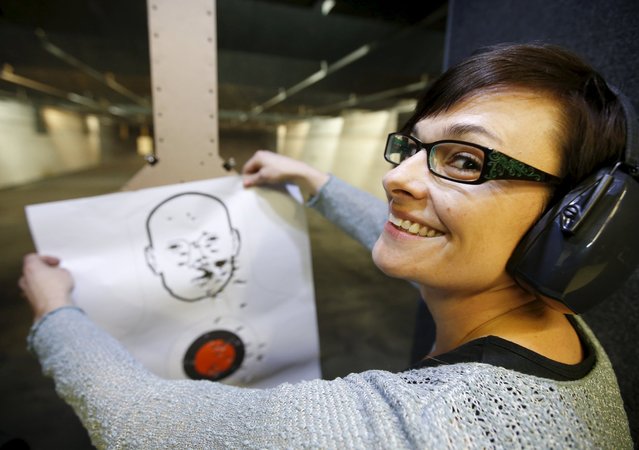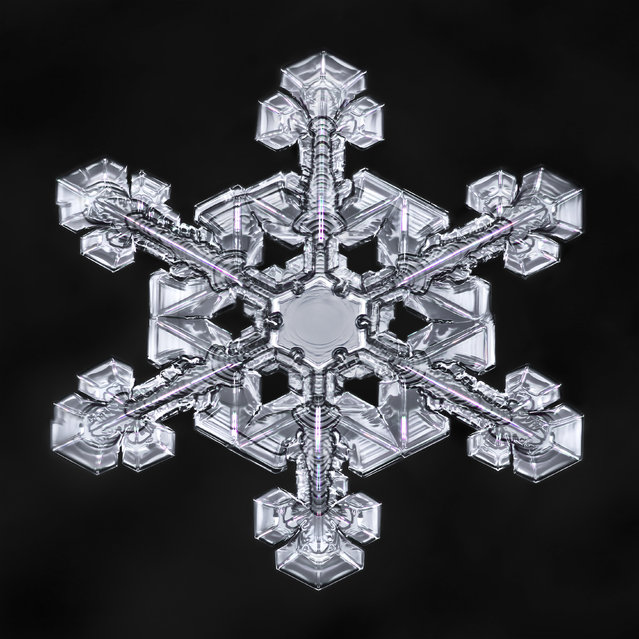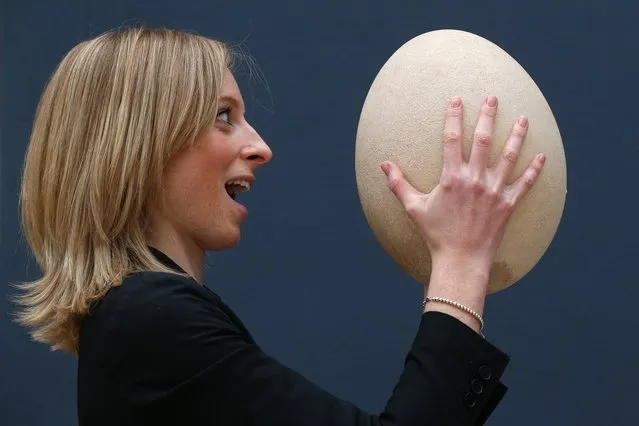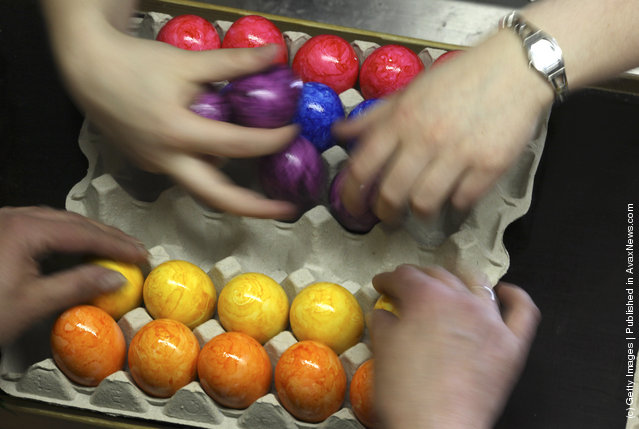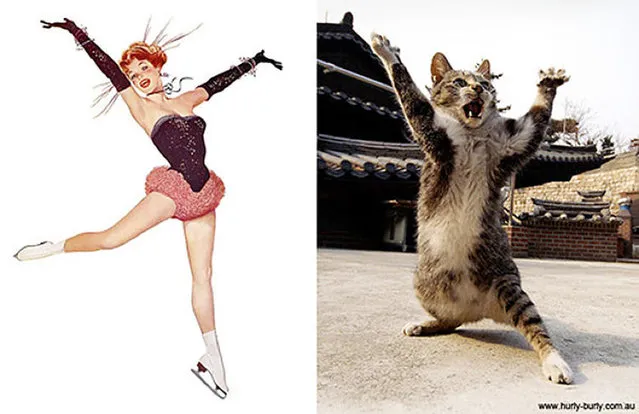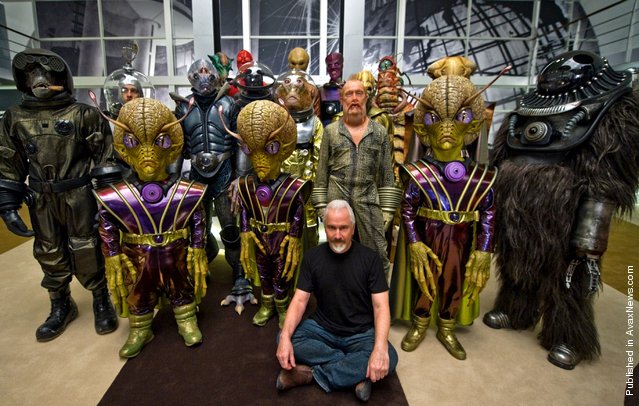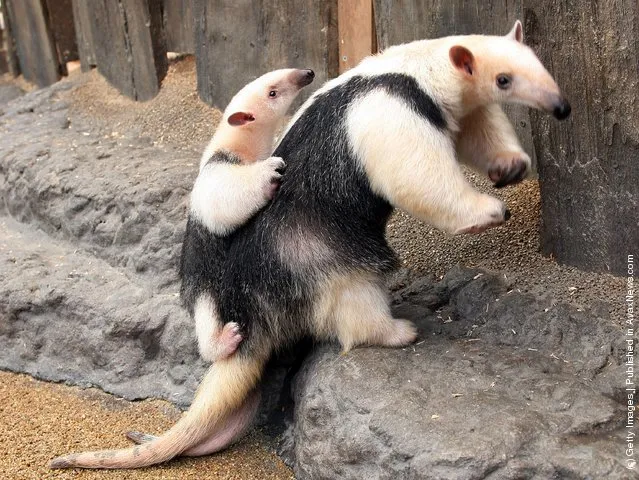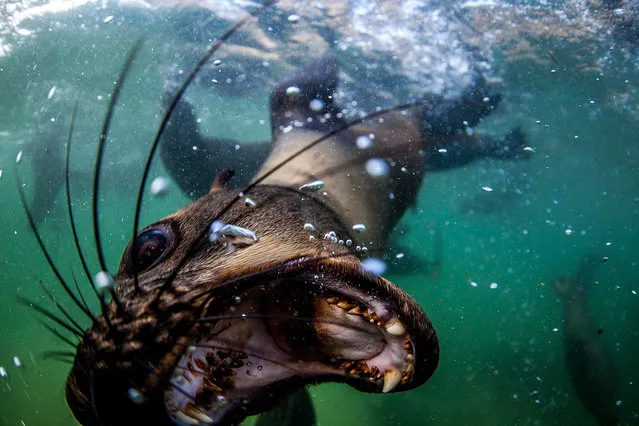
A seal playfully tries to bite the camera, taken on February 2016 in Plettenberg Bay, South Africa. A group of friendly seals get up close and personal with the camera. The pod of brown fur seals, also known as “cape fur seals”, were shot in Plettenberg Bay in South Africa by dive tour operator Rainer Schimpf. The playful creatures prove they are not camera shy in the slightest as they they swim upside down, grin widely and attempt to bite the camera lens. (Photo by Rainer Schimpf/Barcroft Media)
13 Apr 2016 09:38:00,post received
0 comments

